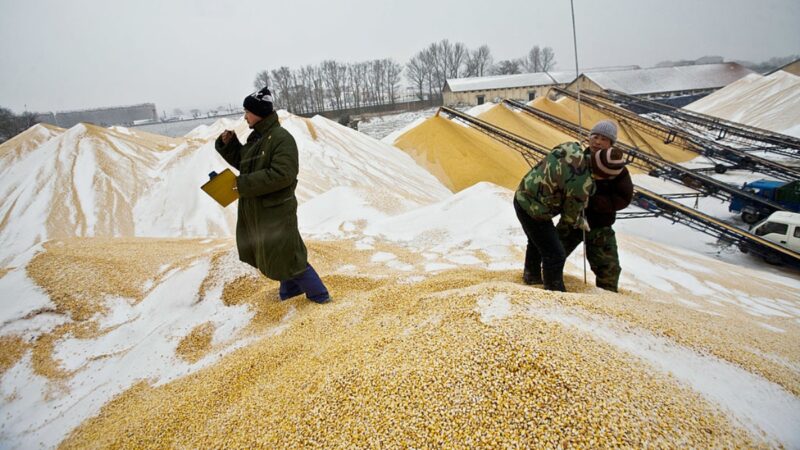[New Tang Dynasty Beijing October 01, 2021]The recent large-scale power cuts in mainland China have highlighted the crisis of China’s energy shortage, and the knock-on effect triggered by this has also begun to appear. The prices of a series of domestic raw materials in China have recently increased. It started to skyrocket. At the same time, international food prices have also entered a cycle of sharp increases. Some scholars believe that under the mutual influence of international and domestic situations, China’s food prices may rise sharply.
Recently, the prices of raw materials and chemicals in China’s construction industry have seen a leap. The price of one ton of sodium dichromate was increased twice within 4 days, and the price of Conch Cement was increased three times within 10 days, from the original 30 yuan per ton to 100 yuan per ton. Some scholars pointed out that this phenomenon is related to the large-scale power cuts and outages currently occurring in many areas of China.
In the context of rising prices of various commodities, food supply has also been mentioned on the table.
The food crisis was originally a long-term problem facing China, and food-related industries are basically high-energy-consuming industries. Whether it is the planting, harvesting or processing of food raw materials, electricity is required. Recently, large-scale shutdowns have occurred. The electricity situation will inevitably have an impact on food production.
On the other hand, China’s agriculture and animal husbandry are very dependent on chemical fertilizers, and the main raw materials for chemical fertilizer production are coal and natural gas. Nowadays, China is facing a shortage of coal, and the price of natural gas in the world is also rising continuously. The price increase of chemical fertilizer is also likely to happen.
Since the beginning of this year, the Dutch TTF natural gas futures price has risen by more than 250%. On September 15 this year, CF Industrial Holdings, a leading US fertilizer company, announced that due to the continuous increase in natural gas prices, the company has decided to close two fertilizer plants in Durham and Cheshire, England. As for when production will resume, it is currently impossible to estimate. Two days later (17th), the Norwegian Yara International Group also stated that the group’s six fertilizer plants in Europe will reduce production by 40%.
It is conceivable that with the continued shortage of coal, the price of chemical fertilizers will inevitably rise, and there may even be a shortage. Once there is a shortage of chemical fertilizers, China’s grain production will not be guaranteed. If grain stocks continue to fall, it will push up grain prices.
In fact, since the beginning of this year, China’s grain imports have accelerated significantly, and the number of imports has also increased substantially.
According to the “Global Grain Market and Trade” report issued by the US Department of Agriculture in July this year, according to China’s official customs data, from January to May this year, China’s rice imports exceeded 2.2 million tons, which has accounted for the total amount of rice imported last year. 3/4 of total imports. The U.S. Department of Agriculture predicts that China’s rice imports will increase by nearly 20% in 2021, reaching 3.8 million tons.
According to a Reuters report on the 24th, China has now become the main buyer of Australia’s upcoming wheat harvest. Of the approximately 5 million tons of wheat pre-sold in Australia for the 2021/22 crop year, Chinese buyers have purchased nearly 2 million tons, which will be harvested by the end of this year.
The report also pointed out that due to the severe weather in Russia and droughts in the United States and Canada, it is estimated that food exports from these countries will be greatly reduced. In August of this year, global wheat prices have climbed to the highest level since 2013.
The information released by China Grain and Oil Information Network on the 28th has mentioned that “affected by the national coal shortage, high coal prices, and the inversion of coal and electricity prices, some provinces are currently experiencing power shortages, and rice companies will also be affected.”
A brief analysis of the grain and oil market published on the Chinese industry website also shows that due to the impact of the power cut, the probability of opening of factories for processing corn, soybeans, and rice has been lowered, which is expected to have an impact on the price of raw materials for related grains.
(Reporter Liming Comprehensive Report / Chief Editor: Lin Qing)
The URL of this article: https://www.ntdtv.com/gb/2021/09/30/a103231153.html
